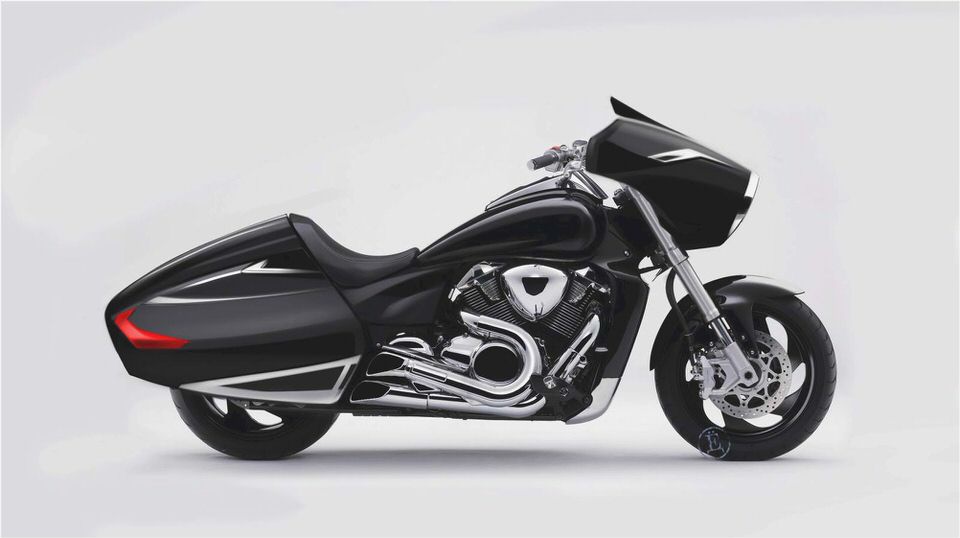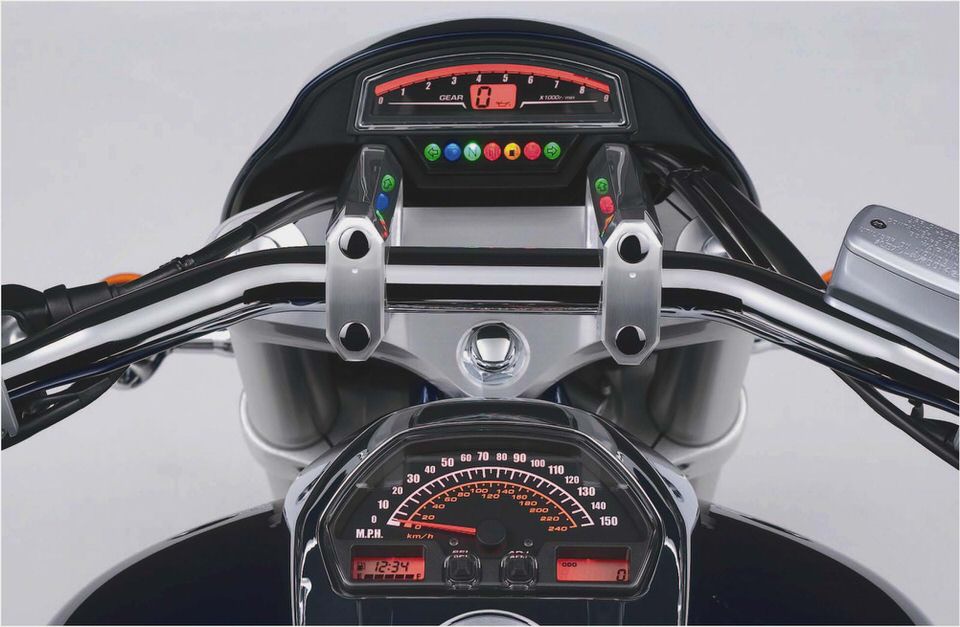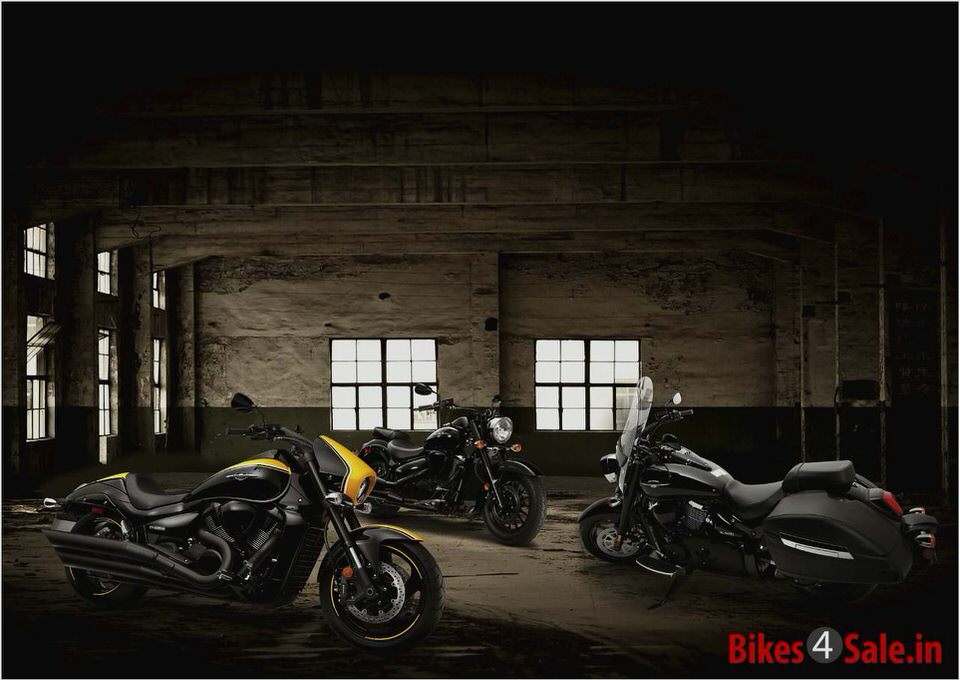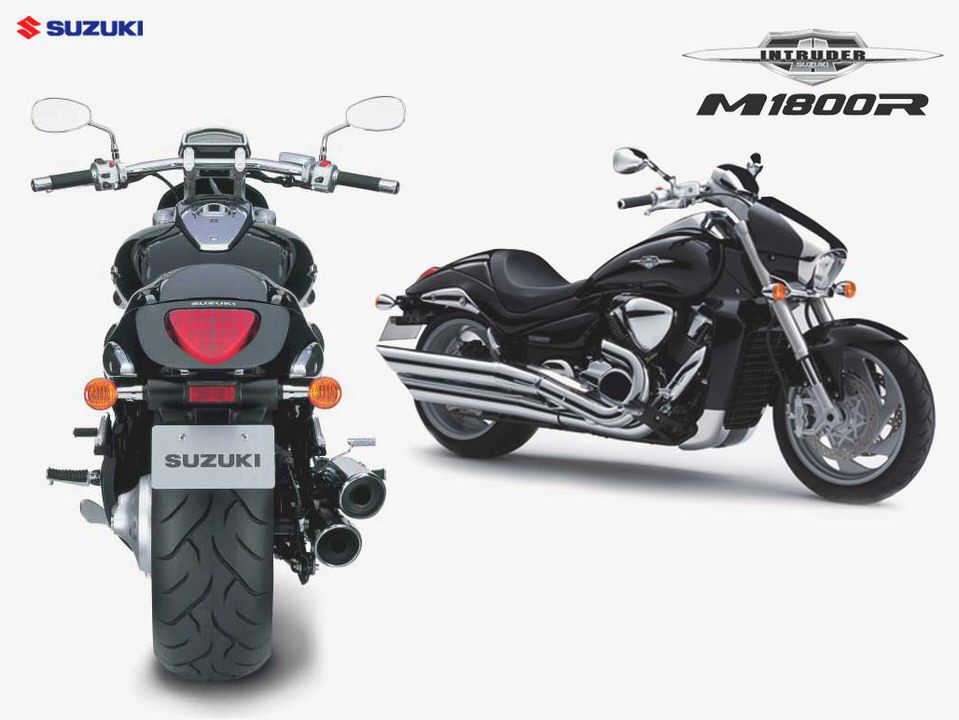
2006 Suzuki M109R First Ride
Suzuki’s new power cruiser boasts more power than its competitors, with a claimed 127 crankshaft horsepower.
A Cowboy’s Prayer:
Oh Lord, I reckon I’m not much just by myself; I fail to do a lot of things I ought to do. But Lord, when trails are steep and the pass is high, help me ride it straight the whole way through. And in the falling dusk I get the final call, I do not care how many flowers they send.
Above all else the happiest trail will be for you to say to me, Let’s Ride, My Friend.
Swinging open the heavy wooden doors, he stepped out of the cool night and into the Driskill Hotel, in the hospitality business since 1886. The smooth tile floor of the lobby echoed to the sound of the cowboy’s polished boots. Stetson worn proud, belt buckle shining, he walked with a laconic gait toward the staircase, glancing over and nodding with slow deliberation as he passed.
I sat making notes in the comfortably worn couch, still dressed in my leather jacket and boots from a day in the saddle, and I acknowledged his gesture as he walked by. No words were needed; just the mutual understanding that exists between two strangers who live for the same freedom, be it on four legs or two wheels.
Choosing the vast, open Hill Country outside of Austin, Texas, to launch its new power cruiser, the M109R. Suzuki chose the perfect location for more than one reason. As a part of the county where the open roads seem to go on forever, the scenery is rugged without being distractingly stunning, as well as being home to ex-500cc World Champion Kevin Schwantz.
As Suzuki’s chosen son, Kevin would lead a dozen journalists for a ride that would go west to the one-horse town of Luckenbach before circling around back to his place for a Texas cookout.
In the same style as all press launches, we were introduced to the new machine before our ride, and for me it was the first time I had seen the newest Boulevard in person. Kicked back on the sidestand in the meeting room, the M109R has a striking presence, with its long, low, solid appearance. It is also very wide, and with its butch inverted front fork, massive 240-section rear tire and swooping bodywork, there is no doubt Suzuki has come up with their own unique version of what a power cruiser should be.
Taking the stage, Suzuki’s PR Manager Glen Hanson quickly lets us know how thrilled he and everyone at Suzuki are with the new M109R. Certain press launches seem to have more buzz about them than others, and with the new bike being just that – a new bike, not a warmed-over existing product – the enthusiasm for it really showed.
Suzuki managed to keep the burly machine relatively agile, adding to the versatility of this big power cruiser.
Suzuki wanted to build the most powerful cruiser, and the message was very clear on who the bike would be aimed at. With models in their extensive range already that cater to the dedicated touring guys, they wanted a machine that would tickle the taste buds of experienced riders, and not just riders from the cruiser world. As a company that is so heavily linked to racing and high performance, Suzuki decided to use some of their own championship-winning road racing technology to also attract the experienced sportbike rider looking for a different experience: Mature riders who aren’t willing to sacrifice performance or compromise too heavily in the handling and braking department.
Watching a video of the bike in action during the briefing, I found it interesting to note it was edited to soft rock and roll, and featured a mature rider bend swinging at a responsible speed out in the countryside. There was no flashing and banging or ADD induced video cuts, just a relaxed mini-movie showing the M109R in what Suzuki must consider its natural habitat.
Next day, rolling along the near deserted roads outside of Luckenbach at a swift but not outrageous pace, the video made perfect sense. The M109R is a big bike and doesn’t like to be hustled. Weighing close to 700 pounds dry, it is not a city commuter.
But, with 3200 rpm up on the digital tachometer, 70 mph registering on the analogue speedometer, and an endless horizon to be reeled in with the super-light throttle, I was out making my own movie. With the soundtrack being provided by the largest pair of pistons every made for a production engine firing through a deep, mellow sounding two-into-two exhaust system, it was the perfect score. Set on a stage of barren, rolling hills, peppered with Ashe Juniper bushes and tightly packed Texas Red Oaks, the wild scene was capped by a perfect, cloudless blue sky.
At 1783cc, the new engine is not the largest, but Suzuki is claiming it to be the most powerful V-Twin in the world. Producing a claimed 127 horsepower at 6200 rpm and 118 lb-ft of torque at 3200 rpm, it has got the Kawasaki Vulcan 2000 and the new Yamaha Roadliner beat by a few, that’s for sure. It just doesn’t out-torque the Vulcan, although not much does.
With the simply massive 112mm pistons blasting up and down their individual 90.5mm strokes, the engine will rev till to 7400 rpm before the limiter shuts things down. Maximum power is quoted at 6200 rpm, but the bike still keeps pulling solidly till 7000 rpm if you need.
During our test I heard one journalist from a well-known glossy publication complaining about the bike’s bland power delivery, and have to disagree. The compact engine is the jewel in the M109R’s crown, and our esteemed scribe to me is mistaking smooth for bland. Producing power anywhere in the range, there is never a second’s hesitation when you twist the throttle, and the bike pulls from just a few rpm off idle with absolute authority all the way to redline.
If you crack open the throttle hard with the big pistons thumping at four grand there is a more feral growl, and you feel a deep, mellow vibration in your gut as you hurtle forward at an extremely rapid pace. Then, rolling off from higher rpm as you shift down through the gears gives the most wonderful sound from the pipes as the engine slows rapidly. Great stuff.
By using a liquid-cooled design, Suzuki was able to develop more power out of the 1783cc V-Twin than any of its air-cooled rivals. Editor-at-large Bayly enjoyed its bountiful powerband that will wind out all the way until 7400 before hitting its rev limiter.
Talking with engine engineer Yutaki Nitta, the pulsation I felt from the engine is a deliberate move to give the M109R character, and after three years developing the new engine, Mr. Nitta had the broadest smile on his face as I extolled the virtues of his baby to him later in the day.
Of course this smooth, seamless vat of power is greatly aided by Suzuki’s sportbike-derived fuel injection. This complex set-up kicks off with the ISC (idle speed control) valve system that adjusts the starting idle to compensate for hot or cold engine and outside temperatures. Two single-barrel throttle bodies get the fuel and air into the cylinders and feature dual throttle valves.
With the system controlled by a power ECM that uses a 32-bit processor, it is little wonder the fueling is so perfect on this bike.
Spent gases pass through a catalytic converter, and the 2-into-1-into-2 exhaust system is also equipped with Suzuki’s own version of the power valve called SET (Suzuki Exhaust Tuning). This is said to improve combustion at the low end of the rpm range, and seems to be doing its job just fine. Producing a good hearty throb, it makes me wonder how the OEMs get these cruisers to sound so throaty yet still pass noise regulations.
You known they are legal, so no complaints, as the accompanying sound is music to ears.
Differing from other cruisers under the Boulevard banner, the M109R uses a 54-degree layout for its V-Twin, not the typical 45-degrees. It is liquid-cooled and uses a DOHC four-valve per cylinder top end. In the interest of keeping the motor as compact as possible, uses a unique twin cam-chain system.
The crankshaft drives a smaller intermediate gear with a short chain before a second chain runs up to rotate the cams. The two-stage system sees the intermediate reduction gear spin at half engine speed, which allows the camshaft sprockets to be smaller in diameter and makes for a shorter and narrower cylinder head. This more compact engine also allows for a shorter wheelbase.
Power is then taken to the rear wheel through a five-speed transmission and shaft drive. I wasn’t sure if shaft drive made sense on a power cruiser at first, but once in the saddle I quickly forgot about it, as the handling of the bike is not upset unnecessarily because of it.

Purple is nice, especially against the Driskill Hotel backdrop. Suzuki has unique styling that incorporates minimal amounts of plastic.
Starting our ride in Austin, my first few miles in the saddle of the M109R were something of a culture shock. With the last three bikes I have tested all being sportbikes at the track, the riding position initially felt alien. I had trouble finding the footpegs that seem to be positioned way out front, and the bars felt too high and wide.
Thankfully, the bike has been designed to lift easily off the sidestand, and coupled with a low 27.8-inch seat height, was easy to maneuver at slow speed.
As we cleared Austin and the countryside opened up, I could feel myself almost melting into position, and by lunchtime I was feeling right at home. The seat itself is very broad, and the ergonomics let you sit straight up, so there is no slouching on the tailbone. With my lower spine consisting of cadaver bone and other assorted artificial bits and pieces, this is a big plus for me, and scores the M109R big points in the comfort department.
Throttle action is as light as it gets, the cable-operated clutch the same, and all of the handlebar controls have a sparse simplicity to them. The front brake lever is six-position adjustable, although the clutch is not and it requires a big reach to pull it. The back brake pedal was a little awkward to use also, as I couldn’t bend my ankle enough to push it all the way down, although some minor adjustment might have it fixed in minutes if we had time.
The front brakes themselves come with a very impressive brochure resume, boasting radial-mount Tokico four-piston calipers grabbing a pair of 310mm floating discs. In reality they were a tad disappointing, lacking the initial bite of the Roadliner set-up we tested in Oregon a few months back and not feeling quite as strong. Riding in a large group I didn’t initially get a lot of chance to put them to test, but what I did notice was as the day wore on, with a few hard stops under their belt, they really started to improve.
Attaching to a custom looking cast aluminum-alloy wheel, that rolls in between a set of 46mm inverted forks, the front end of the M109R looks like it means serious business. The front tire is an aggressive sport-sized, 130/70-18 and accompanied by the wide handlebar blesses the big Suzuki with super-light steering. With a 67.3-inch wheelbase and a rake and trail set at 31.25 degrees and 124mm, I wouldn’t have expected such quick steering.
It’s also extremely solid at speed: I was on the north side of 120 mph at one point when I needed to quickly lose 30 mph for a high-speed left. Rolling off and scrubbing a little speed with the brakes, the M109R simply railed through the turn with the lightest inputs at the bars, not one hint of wobble or weave.
At lower speeds, the 240-section rear tire does make itself felt, with decidedly more effort needed for maneuvering. But using the old turn for the photographer test certainly showed the bike is also extremely manageable if needed. Able to be slowed to a crawl and then turned on full lock, this situation repeatedly simulates parking lot manners, and the M109R gets a good grade on this scorecard.
A 240-section rear tire will leave a fatty strip on the boulevard and a lasting impression on your buddies.
Stopping and starting soon makes it known the exhaust pipes poke out far enough to hit your right leg. Thankfully the heat shields do an excellent job and no heat is transferred to your leg. The chrome shields also look first class, and if there is an un-chromed pipe hiding in there, unlike some other bikes tested, it is certainly not showing. Looking closer, the attention to detail paid on the big Suzuki is excellent.
No unsightly wires or hoses visible and neat flush-mount Allen bolts on a lot of the bodywork. The large 5.2-gallon gas tank has top-quality paint, as do the fenders and side panels, and the chrome engine cases look the business.
There are a good number of plastic parts, but you have to start tapping things to find them, and from a pace or two away you would never notice. Hiding the two spark plugs that live in each cylinder, the covers are actually chromed plastic. Adding to the tidy overall look, they compliment the cylinder fins, air cleaner cover and cases.
The Suzuki M109R is a formidable new competitor in the cruiser arena. It looks suitably mean and futuristic, and is able to back up its looks with a monster motor and a decent handling package. Setting its intentions as a power cruiser, it is still all-day comfortable and able to cover plenty of distance between fuel stops.
The bike comes in three-color choices, and by the time you read this will be available in limited quantities at your local dealer for $12,399.
Share your thoughts on this New Zook in the MCUSA Forum. Click Here




- Project GSX-R1100 Suzuki Bulletin
- VISUAL GRATIFICATION
- 2008 Suzuki B-King Review Reviews Prices Australian specifications
- 2008 Suzuki RM-Z 450 – Used 2008 RMZ 450 at Motorcyclist Magazine
- Suzuki Boulevard C50T Question » Indian Motorcycles Victory Motorcycles…

